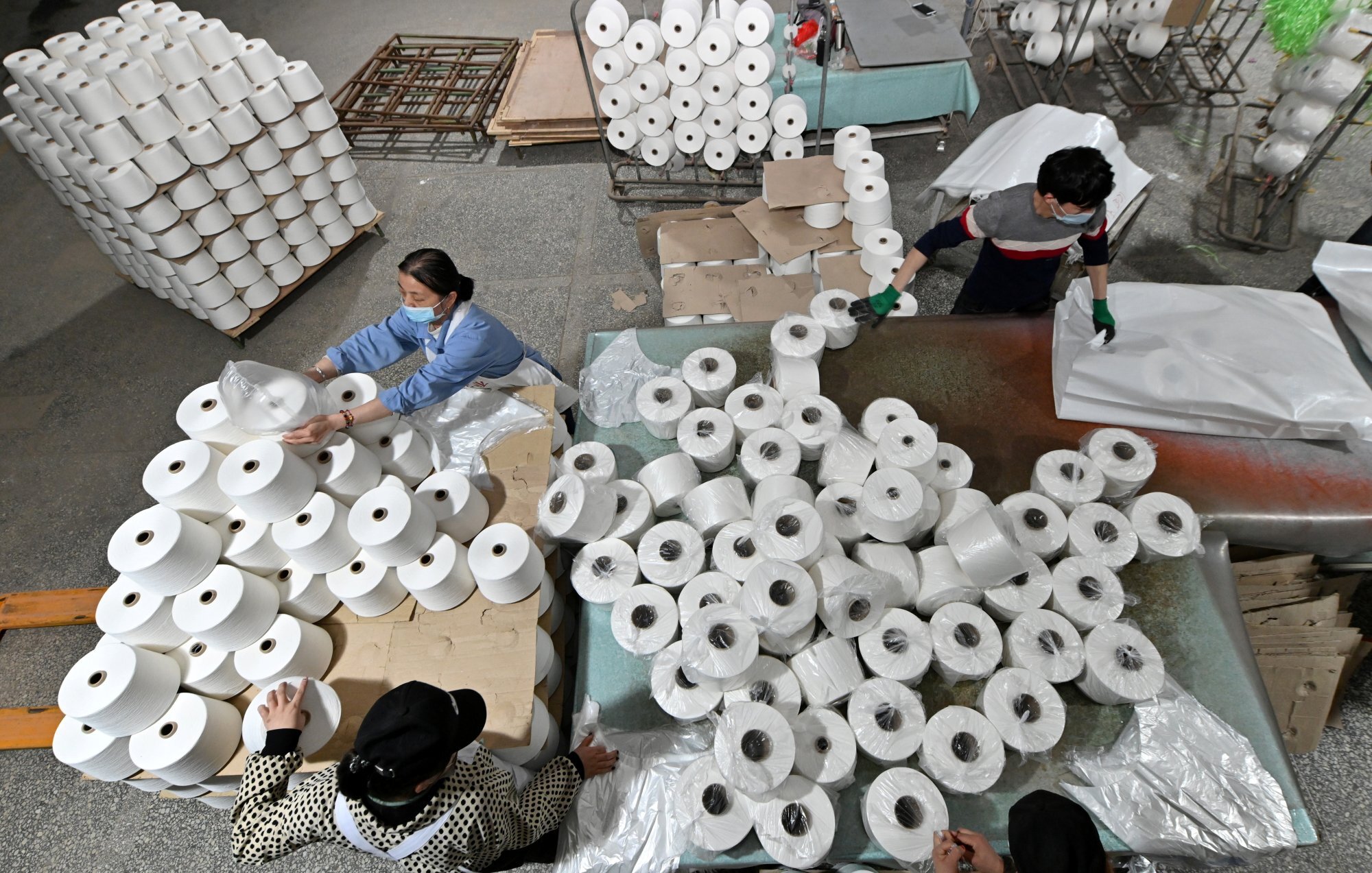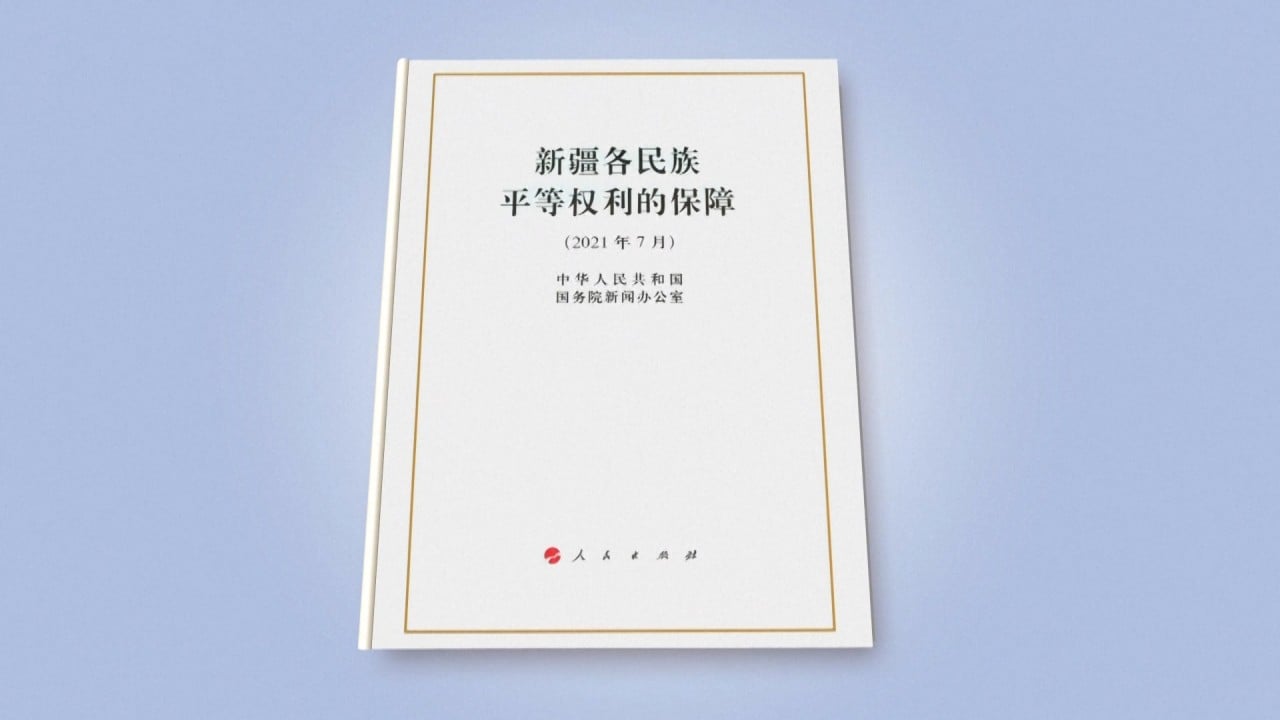
US importers to face ‘crazy hard’ hurdles once bill targeting Xinjiang forced labour becomes law
- Importers will have to prove to the US government that no forced labour was used to produce their goods once President Joe Biden signs the law
- ‘It’s hard to prove the negative,’ said one trade lawyer
For more than a year, businesses and rights groups in the US watched anxiously as the Uygur Forced Labor Prevention Act moved through Congress in fits and starts, wondering if legislative gridlock would ultimately sink a popular, bipartisan bill.
That all changed this week.
The US companies that imported more than US$430 billion worth of goods from China last year will now turn their attention from Congress to America’s customs agency, which will have 180 days to come up with a plan to enforce the new law.
Former customs officials and trade lawyers who spoke to the South China Morning Post say the law’s actual strength will come down to how aggressively US Customs and Border Protection (CBP) ends up enforcing it.
“CBP will always be ready to handle it,” said Ana Hinojosa, a former executive director for trade remedy law enforcement at the customs agency. “The issue is, will it be prepared to handle it to the full extent?”
That, she said, comes down to resources. Congress already boosted the agency’s funding last year, allowing it to add a new, second branch to investigate forced labour.
“CBP has made the argument to congressional committees and to appropriators that this is a very complex issue,” said Hinojosa, who retired from the agency last month. “And to fully address it, you need the manpower, you need the analytical power, you need the scientific power.”
In windfall for Xinjiang, US mutual funds invest millions in its companies
“I believe that Congress will continue to support additional resources, to continue the fight on the prohibition on importation of goods produced with forced labour,” she said.
Beijing denies all accusations of human rights abuses in the region, and says its policies are meant to alleviate poverty and counter religious extremism.
Once the law takes effect, importers will have to prove to the US government that the production of their goods had no forced labour component — a “rebuttable presumption”, as it is called in the legislation.

But experts say that proving so has become nearly impossible because independent audits cannot be conducted in Xinjiang, where Uygurs are reported to be subject to intense surveillance.
“Even before this bill, you’re supposed to know your supply chain, and know that there’s no forced labour in it,” said Michael Roll, a customs and trade lawyer in Los Angeles at the law firm Roll and Harris.
“But creating a rebuttable presumption that there’s forced labour if it comes from the Uygur region, from Xinjiang, kind of kicks it up to another level.”
“It’s hard to prove the negative.” he added. “It’s crazy hard.”
Can US go big on wind power without turbines from Xinjiang?
Earlier this year, the customs agency issued a call for companies to submit plans for technology that could help them trace textiles to their source — a potential tool to help weed out Xinjiang cotton from the US supply chain. Xinjiang produces about one fifth of the world’s cotton.
But experts warn that these methods cannot fully replace due diligence by companies into their supply chains, which can span multiple countries and even continents.
The sheer volume of goods flowing into the US from China means the customs agency would have a hard time catching every item that potentially violates the new law, even with the use of smart technologies that might help trace their origins.
“It would be impossible to stop every shipment coming from China and manually check to see if it contains those goods,” said Hinojosa.
Instead, she said CBP does its best to target the shipments deemed to be at the highest risk for forced labour. In theory, those could also include goods made in factories thousands of miles from Xinjiang — on the east coast of China, for example, or even overseas.
The agency declined to comment.
Is this the next Xinjiang product to upend global supply chains?
Chinese customs data shows that Xinjiang’s direct exports to the US for the first ten months of 2021 were just four hundredths of one per cent of China’s total exports to the US.
“Even if the factory that you are buying your finished product from is 2,000 miles away from Xinjiang, do you know where they’re getting their raw materials to make the product?” said Shibles. “These are the questions that people need to be asking.”
Olga Torres, managing member of Torres Law, a firm in Washington that specialises in trade and national security, said she expected US customs would crack down hard.

“This is also very political and has wide bipartisan support,” she said. “So we expect high enforcement.”
Beijing has also introduced its own legal measures that could potentially frustrate efforts by US importers to ensure they are not running afoul of the forced labour act.
“It has made a lot of information not very clear,” she said. “Because manufacturers don’t want to share information for fear of retribution from the Chinese government.”
Xinjiang’s solar industry needs a rare form of quartz — and the US is selling
Regardless of the challenges, experts say, businesses should already have been preparing for the eventual passage of the Xinjiang labour bill.
“I don’t believe anyone who’s paying attention should be surprised,” said Shibles.
“You can’t take an ostrich approach and just stick your head in the sand,” added Roll, the lawyer in Los Angeles. “You have to look at your supply chain ... because customs, sooner or later, is going to.”
“It’s like the speed limit – they don’t get everybody who speeds, but you don’t want to be the one who gets caught,” he said. “And it’s not right to speed.”


